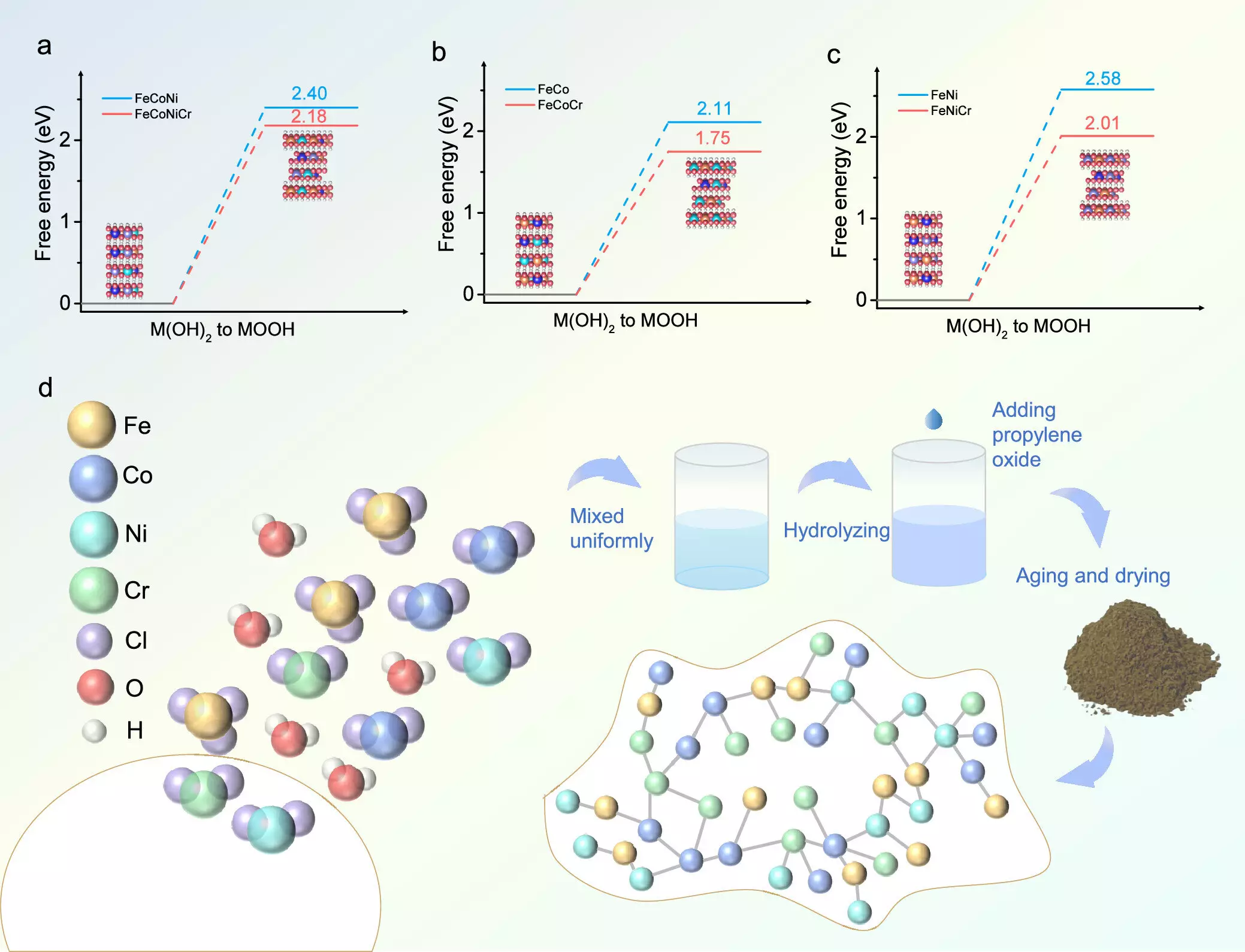As the global focus on sustainable energy intensifies, recent advancements in the field of catalysis, particularly for the oxygen evolution reaction (OER), open exciting avenues for enhancing clean energy technologies. Researchers have developed innovative methods to create cost-effective catalysts that could transform processes such as water splitting and metal-air batteries. By incorporating chromium (Cr) into transition metal hydroxides, this groundbreaking research not only enhances catalytic performance but also provides an exemplary strategy for future investigations into efficient energy solutions.
The oxygen evolution reaction is a fundamental process in electrolysis, especially for hydrogen generation. However, its slow kinetics have been a significant bottleneck, necessitating the design of high-performance catalysts. In their recent study published in ACS Catalysis, researchers from Tohoku University demonstrated that chromium doping can dramatically accelerate the phase transition of metal hydroxides into an active oxyhydroxide phase. This transition is vital as it underpins the efficiency of the OER. According to lead researcher Hao Li, this enhancement in efficiency stems from the optimized electronic environment around the active sites, a finding supported by density functional theory (DFT) calculations.
The innovative team synthesized a FeCoNiCr hydroxide catalyst using a meticulous aqueous sol-gel method. This sophisticated technique ensures a homogeneous distribution of the catalyst’s constituents, which is essential for optimal performance. The resulting catalyst demonstrated an impressive low overpotential of 224 mV in alkaline conditions, surpassing similar catalysts by a noteworthy margin of 52 mV. Moreover, it exhibited remarkable stability, remaining operational for over 150 hours, underscoring the potential for commercial applications in renewable energy technologies.
An intriguing aspect of this research is its implication for practical applications. The team evaluated the catalyst’s performance within a zinc-air battery system, where it operated stably over 160 hours while maintaining a minimal discharge/charge voltage difference of 0.70 V. This efficiency is crucial for harnessing the full potential of renewable energy systems, where extended operational life and low energy loss are key for practical utilization.
Looking ahead, the team plans to broaden their research scope by investigating other elements that could further enhance catalyst efficacy. The work of Di Zhang, a specially appointed assistant professor alongside Li, emphasizes the importance of a systematic approach to material screening. This methodology is not only instrumental in optimizing current catalysts but also paves the way for the development of even more efficient and durable solutions, vital for scaling up hydrogen production and other clean energy technologies.
As the international community grapples with the pressing need for clean energy solutions, the role of cost-effective and efficient catalysts cannot be overstated. The advancements made by this group of researchers represent a significant stride toward overcoming the challenges associated with catalytic processes in renewable energy. By refining the OER through methodologies like chromium doping and exploring new materials, they are setting the stage for a sustainable future where clean energy solutions are not only viable but also practical and ready for widespread adoption.

